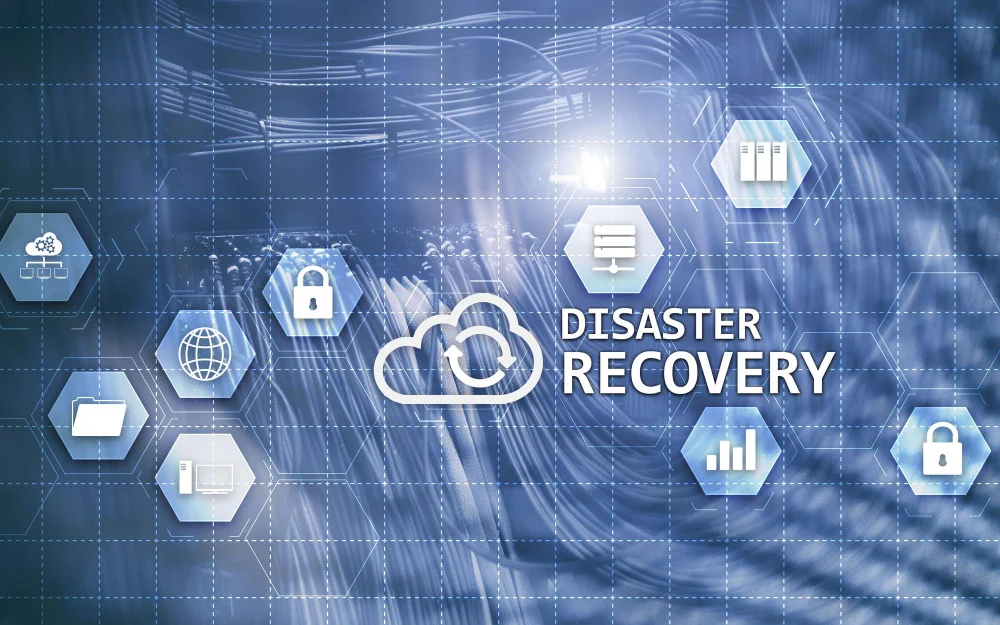Today, businesses rely a lot on technology· From managing sales online to keeping track of payroll, technology plays a significant role in everything· But what if something goes wrong, like a power cut, a flood, or a cyberattack? These events can stop a business in its tracks· This is where a Disaster Recovery Plan (DRP) comes in.
A DRP typically tells a business what to do when disaster hits. The goal is simple – keep the business running with as little interruption as possible·
In this blog post, we’ll take you through the basics of a DRP, explore why it’s crucial, what it includes, and how to make one· Let’s dive in!
What is Disaster Recovery Planning?
A DRP is a detailed guide that tells a company how to bounce back after unexpected events· These emergencies can be anything from natural disasters, like floods and earthquakes, to tech problems like cyberattacks or system failures· In that scenario, it helps to get the business back on its feet quickly and efficiently.
A DRP is a well-thought-out plan that covers every part of the business that technology touches· This is crucial because, today, almost every aspect of work depends on some form of technology· Without a plan, a small hiccup could turn into a huge problem, causing the business to lose money and its good reputation.
The Components of a DRP

Developing a DRP data recovery plan requires a detailed understanding of an organisation’s IT infrastructure and the potential risks it faces. The plan should include:
- Goals: Clear objectives, including Recovery Time Objective (RTO), Recovery Point Objective (RPO), and disaster recovery policy, guide the disaster recovery process. These goals influence daily IT operations, including backup frequency and network design.
- Personnel: A DRP must specify who is responsible for executing each part of the plan. It should account for the possibility of key individuals being unavailable.
- IT Inventory: A comprehensive list of all hardware, software, and cloud services essential for the company’s operation. This inventory helps identify critical applications and data.
- Backup Procedures: Detailed instructions on how data is backed up and stored are crucial. The plan must ensure that backups are not susceptible to the same risks as the primary data.
- Disaster Recovery Procedures: Beyond restoring data, the plan must outline how to recover from various types of cyber security incidents and ensure backups are clean.
- Disaster Recovery Sites: For many businesses, a remote disaster recovery site may be necessary. This site can either store backups or replicate the IT environment for a seamless transition during disasters.
Return to Business as Usual (BAU): Finally, the DRP should outline steps to return to normal operations, including the recovery of non-critical systems.
How to Develop a Disaster Recovery Plan?

Crafting a DRP is crucial for ensuring your business can quickly bounce back from unforeseen events· Let’s break down the process into manageable steps, making it simpler to protect your operations, data, and reputation.
Identify Potential Disasters
The first step is a comprehensive assessment of all the threats your business might face· This includes natural disasters like floods and earthquakes, technological failures, cyberattacks, and even global health crises like pandemics· Understanding the full range of risks is essential for preparing an effective response.
Evaluate the Risks
Once you’ve identified potential disasters, analyse their possible impact on your operations· This involves looking at which systems and processes would be affected and understanding the consequences of downtime or data loss· Collaboration across departments is important here, as insights from various areas of your business will provide a complete picture of the potential damage.
Prioritise Critical Functions
Not all business functions are created equal, some are critical to your operations, while others can be temporarily paused without significant impact· Determine which functions are essential for your business’s survival and recovery, and focus your planning around these· Consider factors like the time of year or specific business cycles that might affect the criticality of different functions.
Set Recovery Objectives
Define clear Recovery Time Objectives (RTOs) and Recovery Point Objectives (RPOs) for your critical functions· The RTO is the maximum acceptable downtime, while the RPO determines the maximum age of files that must be recovered from backup storage for normal operations to resume· These objectives will guide the development of your DRP by setting clear, measurable goals for recovery.
Gather Necessary Information
Compile a detailed inventory of your IT infrastructure, including hardware, software, data, and network resources· Also, document the contact information for key personnel and external partners who will play roles in the recovery process· This information should be easily accessible and stored in a secure, off-site location.
Document the Plan
With all the necessary information in hand, draft a comprehensive DRP· This document should outline specific steps for responding to different types of disasters, detailing the actions required to recover critical systems and data· Ensure the plan is clear and concise, with straightforward instructions that can be followed under the stress of a disaster situation.
Test and Revise the Plan
A DRP is not a set-it-and-forget-it document· Regular testing is necessary to identify weaknesses and areas for improvement· Simulate disaster scenarios to practice the response and recovery procedures and use the insights gained from these exercises to refine the plan· Continuous testing and revision ensure the DRP evolves with your business and remains effective against new threats.
Conclusion
Having a Disaster Recovery Plan is like having a safety net for your business, helping you get back on your feet fast if something goes wrong, like a cyberattack or a natural disaster· By figuring out what could go wrong, deciding what’s most important, and making a clear plan, you’re ready for anything· Testing and updating your plan makes sure it works when you need it· This shows everyone that your business is strong, smart, and ready for the future.

